1. Benthic macroalgae
- Distribution: macroalgae (kelp) are most abundant on rocky shores in temperate regions
- Groups of macroalgae:
- Brown algae (Phaeophyta), e.g. Fucus; Laminaria (California kelp forrests! Home of the seaotter), Macrocystis (biggest kelp); gas bladders keep thalli afloat
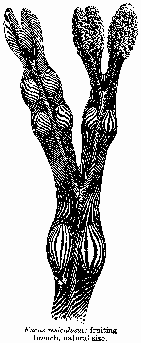
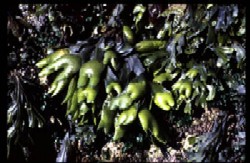
Gas bladders like in this thallus of Fucus keep seaweeds afloat

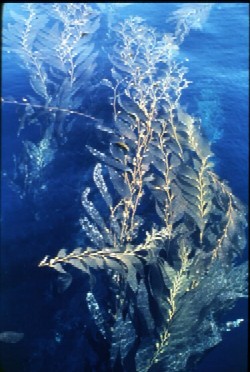
Brown algae like Laminaria
and Macrocystis (kelp) can reach substantial size up to several
meters (above). They can form dense kelp forrests (below), which are the
home of seaotters off the coast of California.
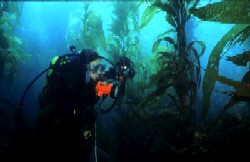
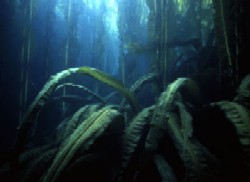
- Red algae (Rhodophyta), may be filamentous or erect thalli; Porphyra commercially used in asia (nori)
- Green algae (Chlorophyta): filamentous (Acrosiphonia) or thalli (Ulva)
- Microalgae: live on the sediment or within the sediment, mostly pennate diatoms; can have significant primary production
- Cyanobacteria might form stromatolites
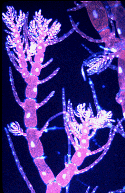
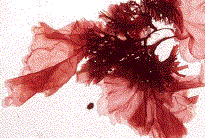
Red algae may be filamentous (left; nuclei stained, fluorescence microscopy) or thallous (right, Porphyra sp.)
Green algae can also be filamentous (left, Acrosiphonia) or form thalli (right, Ulva).
Take a look at photographs of kelp forests and much more marine life by clicking here -- and more photographs, sorted according to species and groups, are found here
Protocols for the monitoring of macroalgae can be found here
- Seagrass: important hatchery grounds for shrimp and fish, help „cleaning“ the water. They are higher plants, and several species occur
- Danger to seagrasses: pollution and eutrophication (phytoplankton blooms) increase turbidity, reducing light; sport boating causes „scares“ by uprooting plants.
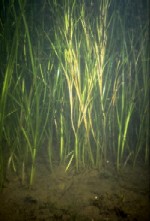
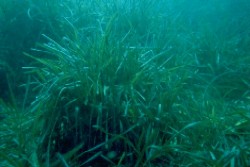
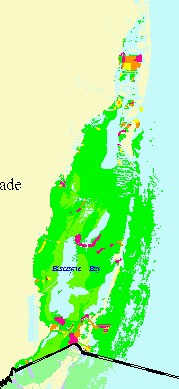
Seagrass damage by prop scars, Dade County, FL: green = little affected, yellow = moderately affected, re = strongly affected
- Mangroves: forests whose feet stand in the water, at least at hight tide; rich organic production and complex ecosystem
- Three mangroves in FL:
- The red mangrove has distinctive "prop roots" which extend from the trunk and branches into the soil.
- Black mangroves have pencil-like roots called "pneumatophores" which grow upward from the underground roots.
- White mangroves have salt glands on the leaf surface to excrete excess salt.
- Read about the importance of mangrove flocs in sheltering seagrass in turbid coastal waters
-
To learn more about mangroves and how to distinguish them, follow the
following web links (with nice pictures of the three Florida mangrove species):
>>Reprint of Florida's Mangroves: "Walking Trees"
>>Mangroves - Florida's Coastal Trees; from the University of Florida Institute of Food and Agricultural Sciences
>>Mangroves, Information from the Stone Middle School, Melbourne, FL